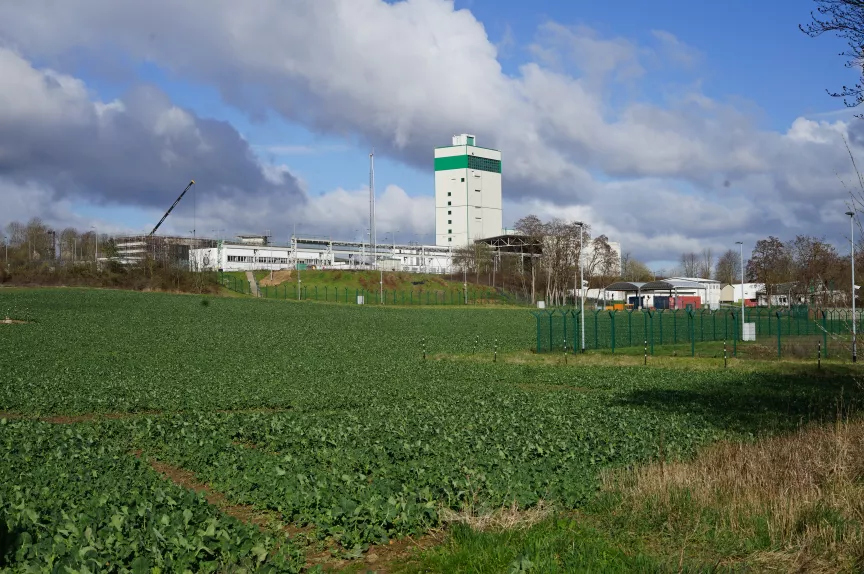Research Site: MORSLEBEN & BEENDORF
25/10/13

The Morsleben repository and its preexisting 300-resident host community of the same name is located in Saxony-Anhalt on the east side of the border with Lower Saxony, which formerly separated East and West Germany. From 1971 to 1991, and again from 1994 to 1998, approximately thirty-seven thousand cubic meters of low- and intermediate-level radioactive waste were moved into storage in the underground salt dome there. Morsleben is the first German final repository to be sealed under German nuclear law. It is managed by the Federal Company for Radioactive Waste Disposal (BGE), which is currently testing new waste storage techniques on site and is conducting stabilization work in order to prepare the mine to be sealed for good.
The German Democratic Republic (GDR) began commissioning nuclear power plants in the mid 1960s, with the Rheinsberg Nuclear Power Plant going online in 1966. Consequently, the need for a repository for low- and intermediate-level radioactive waste became clear. High-level radioactive waste, like fuel rods, was sent back to the Soviet Union for recycling. In 1971, the Bartensleben shaft in Morsleben was approved as a final repository for radioactive waste from the Rheinsberg power plant, and the first radioactive waste was test-stored using only mining techniques, without further safety measures. The repository was structurally completed later on and then given a permanent operation permit. From 1987 to 1996, the Morsleben repository was also used as an interim storage facility for twenty thousand barrels of toxic waste. The barrels were removed at the end of 1996.
In 2001, after suspending the delivery of more nuclear waste in 1998, the Federal Office for Radiation Protection (BfS) reassessed the repository and decided that no more radioactive waste would be delivered or temporarily stored there. Between 2003 and 2011, stabilization work became necessary in the central section of the Bartensleben mine, which was achieved by filling the destabilized sections with salt concrete to ensure the mine’s safety for permanent closure. The decommissioning plan includes comprehensive backfilling and full closure of the mine with salt concrete, thus permanently sealing the Marie and Bartensleben shafts. The closed repository should securely hold radioactive waste for all time, with no further need for maintenance. Since future water ingress cannot be entirely ruled out, the BGE is also testing particular underground sealing methods to ensure that radioactive waste remains isolated from both the rest of the mine and its wider environment.
In its in-house magazine Einblicke [Insights], the BGE states, “Experiences with the Morsleben repository show that old mines are only partially suitable for the final storage of radioactive waste.” This is because there is an unnecessary amount of underground chambers with far too large a volume. According to the BGE, the storage site should include a rock formation several hundred meters deep that is stable, as watertight as possible, and capable of absorbing or withstanding the high temperatures emitted by the radioactive waste sealed within. Suitable host rock for safe containment over millions of years could consist of rock salt, claystone, or crystalline rock (granite), all of which are found in Germany.



